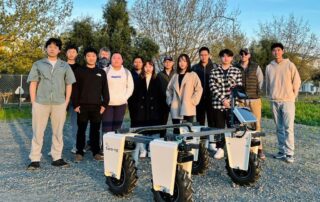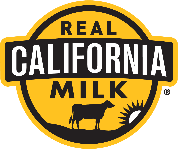Almond Board Committees
The Almond Quality, Food Safety and Services Committee considers and recommends to the Board rules and regulations pertaining to the federal marketing order. This committee also provides oversight for other marketing order services and educational activities which are necessary to maintain the high quality standards and safety of the California almond industry. This committee consists of seven members. In addition, this committee oversees an Industry Services Subcommittee and a Biomass Task Force.
Organic Advisory Panel
The mission of the Organic Advisory Panel is to address issues impacting organic almond production, trade and consumer awareness. This panel will direct staff on areas of focus including research, marketing, national and local organic initiatives, and other areas.
Finance and Audit Committee
The Finance and Audit Committee is responsible for reviewing all financial reports and making any appropriate budgetary recommendations, including the assessment rate for the upcoming crop year, to the Board. This committee is also responsible for reviewing quarterly and annual financial statements as well as ABC’s annual external audit, and presenting this information to the Board. The committee is comprised of five members, selected from the Board, five alternates and the Treasurer, who is the chair.
Global Communications Committee
The Global Communications Committee guides and informs strategy for industry and external communications about California almonds, the almond industry and the Almond Board of California. The committee will provide stakeholders and consumers with information about the almond industry and its practices, anticipate and provide counsel on various issues and potential crises, and disseminate industry-funded research findings to a variety of audiences. This group also engages members of the almond community by creating programs and events that motivate industry members to become more efficient in and out of the orchard.
Global Market Development Committee
The Global Market Development Committee evaluates growth opportunities available to the almond industry and makes recommendations to the Board. These recommendations include a worldwide market research and market development program for each crop year. The committee also administers government-funded marketing and research programs and may also recommend to the Board changes in the marketing order rules and regulations, granting credit to handlers for qualified promotional activities. These credits are granted based on the proportion of assessment credit determined to be granted for each type of promotional activity.
Nutrition Research Committee
Committee Mission: Guide ABC’s nutrition research investments to advance the science on the impact of almond consumption on human health and enhance ABC’s ability to communicate almond’s health benefits globally. The Nutrition Research Committee focuses on ongoing nutrition research which adds to the existing body of almond science and is utilized by the Board in global marketing outreach programs to promote the consumption of almonds. Current strategic research areas focus on the relationship between consumption of almonds and heart health, diabetes/prediabetes, weight management, gut health, cognition, skin health, exercise recovery and other areas. This committee is comprised of seven members and three alternates, consisting of food scientists, nutritionists, almond growers and other almond industry representatives.
Strategic Ag Innovation Committee
The Strategic Ag Innovation Committee is the “strategic forward thinker” for the almond industry and is supported by specialty-area research working groups. This committee shall consider and recommend projects that maintain the almond industry’s leadership role as a “Crop of Choice” for California, and which reflect the overall production and environmental research needs of the almond industry. This committee consists of ten members and oversees the six specialty-area research working groups listed below. All of the working groups review research proposals and make funding recommendations to the Strategic Ag Innovation Committee.
Production Stewardship Workgroup
Our Production Stewardship Workgroup identifies innovative production research and technology to support Almond Board’s vision and mission to make life better by what we grow, how we grow, and accelerate adoption of industry best practices. Areas of research and extension that this group advise include orchard configuration, tree growth, breeding, pest management, irrigation, nutrient management, soils, harvest, precision ag. technology, environmental sustainability, and others.
Pollination and Bee Health Working Group
The Pollination and Bee Health Working Group prioritizes issues for ABC attention and response related to honey bee health. The goal of this group is to provide a safe, nutritional environment for pollinators in almond orchards, ensuring a sufficient and affordable supply of honey bees for almond pollination and reducing reliance on honey bees in the long term.
Biomass Workgroup
The Biomass Workgroup aims to maximize value-added utilization for all orchard products, other than the edible nut, which are financially viable and environmentally friendly. Among other responsibilities, this group will review research proposals and RFP’s; make funding recommendations for research projects and analytical testing for almond woody and fleshy biomass.
Technical & Regulatory Affairs Committee
The Technical & Regulatory Affairs Committee provides support to and cooperates with almond industry stakeholders and other Almond Board committees, focusing on those issues that impact the production and worldwide marketing of California Almonds. This synergy will enable greater integration and contribute to the overall success of the industry.
















